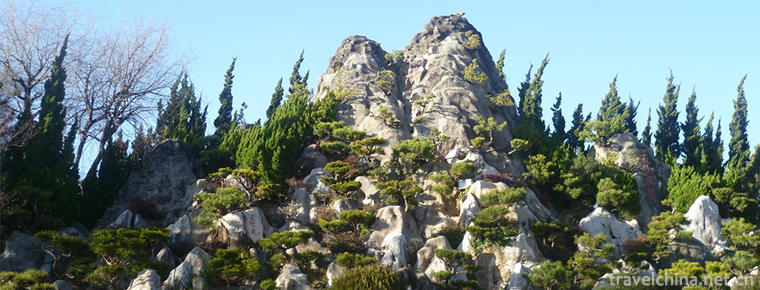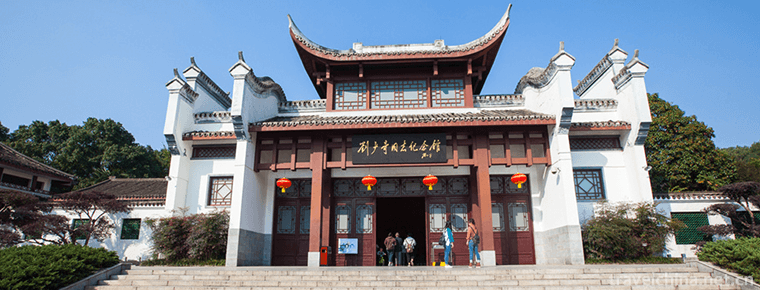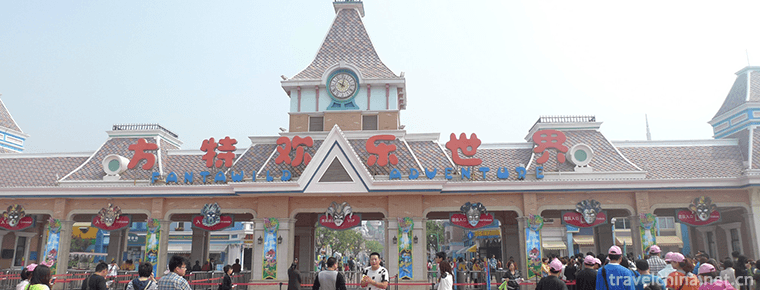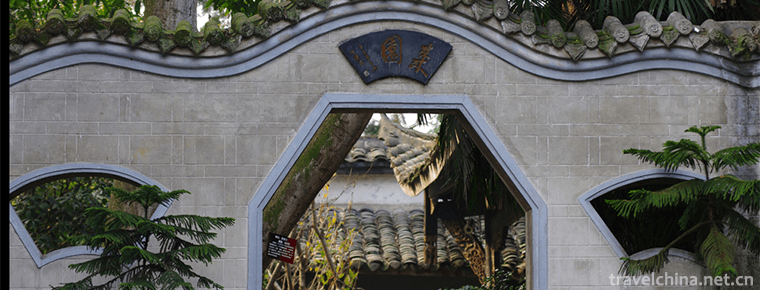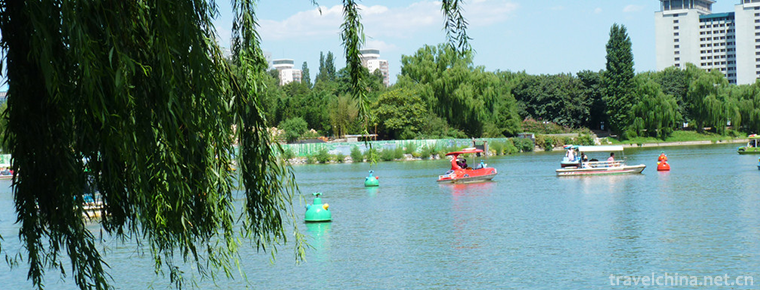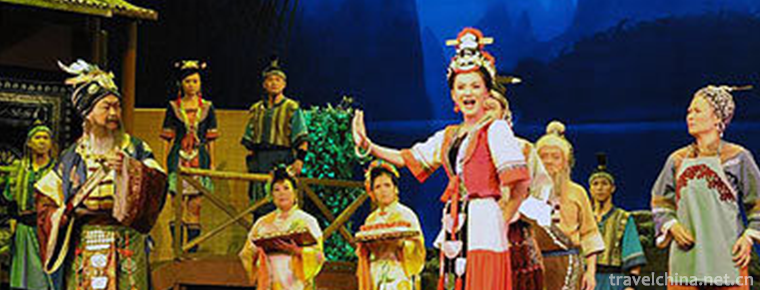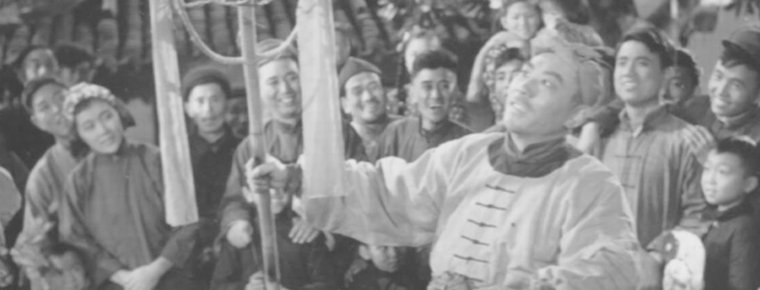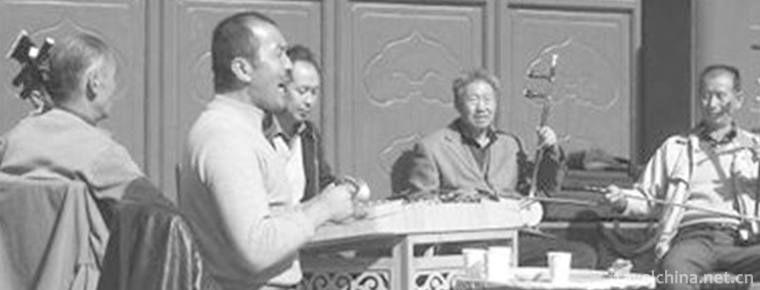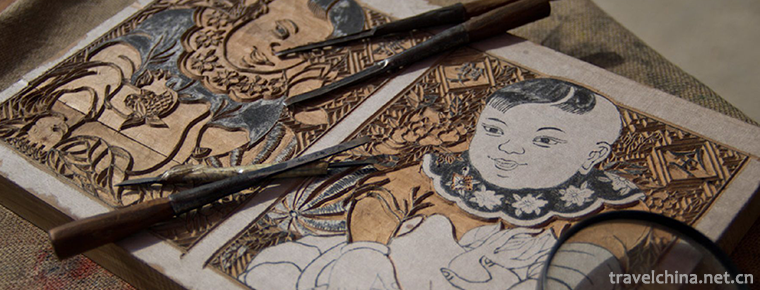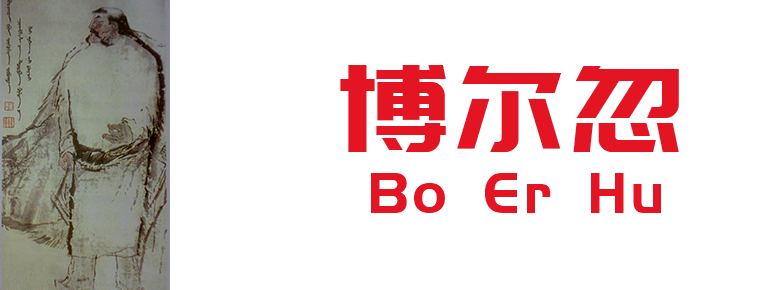Wenzhou opera
Wenzhou opera
Ou Opera, formerly known as Wenzhou Ran Tan, is a traditional local opera in Zhejiang Province and one of the national intangible cultural heritage.
Ou Opera has a history of more than 300 years with "written warmth" as its stage language. The more influential traditional plays are Gao Ji and Wu Sanchun, Yanghe Pickup and the modern play "East China Sea Sentinel" created by Ou Opera. In 1959, it was named Ou Opera. Ouju opera has formed a unified artistic style in its main performance, which is simple, lively, rough and delicate. Both civil and military skills, both singing and doing, in order to excel in workmanship. Music is simple, lively, fluent and expressive. It can express the complex feelings of various characters in detail.
On June 7, 2008, Ouju Opera was approved by the State Council of the People's Republic of China to be included in the first batch of national intangible cultural heritage lists, with the heritage number IV-106.
historical origin
Ou Opera has a history of more than 300 years. The most influential traditional plays are Gao Ji and Wu Sanchun, Yanghe Pickup and the modern play Xiao Sentinel in the East China Sea. The music of Ou Opera is not only random play, but also singing tunes of Gaoqiang Opera, Kunqu Opera, Hui Opera and Pihuang Opera, which are very rich and colorful. Ouju opera singing voice is divided into "Zheng Ran Tan" and "rebound"; the main tunes of Zheng Ran Tan are "Slow Ran Tan" ; rebound includes "Jincui] , etc.
Wenzhou Ou Opera, formerly known as "Wenzhou Ran Tan", was formed in the late Ming and early Qing Dynasty. It has been a multi-tone opera. Historically, it mainly sings random tune, with six tunes, namely, bamboo tune, Kun tune, emblem tune, beach tune and current tune. In 1959, Wenzhou was known as "Dongou (Kingdom)" in ancient times, and Oujiang River runs through the whole territory. It was renamed "Ouju Opera" and became known as the opera genre. During Jiajing period of Ming Dynasty (1522-1566), Haiyan Cave quickly occupied the urban and rural areas of Wenzhou.
In the Qing Dynasty, because of its high-pitched voice, it was widely called "Gaoqiang", which had spread all over the country at that time. The development of opera music in ancient times has great extensiveness, popularity and mobility. It is not surprising that they absorb and influence each other, even catalyze and integrate each other.
In the middle of the Qing Dynasty, there were more than 30 class clubs, which flourished for a while. So far, the pattern of their popular areas has remained basically unchanged.
After the founding of New China, in 1951, the government combined the remaining "Fengyu Class", "Xinfengyu Class" and "Xinfengyu Class" ("Shengfengyu Class") into "Wenzhou Shengli Munition Troupe". Later, some of the backbones of the "Renewal" and "Red Star" riot troupes were enriched in "Victory" and integrated several times to form a model troupe.
Since 1957, the government has successively appointed some political, administrative and professional creative cadres to expand the troupe and troop, forming a more complete and powerful drama editing group.
In 1959, with the approval of the government, it was renamed "Ou Opera" and became the "Opera Troupe Owned by the Whole People".
Cultural characteristics
Music for voices in a Chinese Opera
Ou Opera is mainly composed of chaotic tunes, including high tunes, Kunqu Opera, Hui Diao Tanhuang and Shitong tunes. Ou drama has the same origin as Wu opera and Shao opera, but it also has its own characteristics, which can be divided into two kinds: positive and negative. In addition to the anti-rebound part of "Hou See Gu" in "Pearl Tower", all of its traditional play of random play is playing right and wrong. Ouju opera's high-pitched tune is composed of a combination of tunes and cards. It is composed of drumming festivals, solo singing by one person and accompaniment by many people. It starts with dull drums or after Taobai. There are several board-like rhymes in the tune, which are combined with singing and reading. The Kun Opera in Ouzhong is a combination of Qupai and Qupai. The accompaniment is mainly flute. Its tune is soft and graceful, simple and unadorned. Its singing method is a little shorter than that of Sukun, and it retains a more ancient style. The Hui tone in Ou Opera refers to Xipi and Erhuang. Pi and Reed are mainly composed by Huihu. The tune is smooth and simple. The male tune is high and agitated, while the female tune is gentle and tactful. Originally a folk sitting-singing form, Tanhuang in Ou Opera was absorbed by the random bullet squad. Its tune is light and beautiful, and it is fluent and changeable. The tunes in Ou Opera are mostly popular folk songs since Ming and Qing Dynasties. In the long-term stage practice of Ouju Opera, each of the above voices maintains its own unique style, but there are also several voices in the same opera, or at the beginning of Kunqu Opera, to pick up scrambling bullets (such as "selling rouge"); or there are scrambles in Kunqu (such as "Leifeng Pagoda"); or the scramble in Huilong Pavilion) in Huizhong (such as "Huilong Pavilion") and so on.
Profession
Ouju opera's trades are classified as "upper four feet" (sheng, dan, jing, ugly) and "lower four feet" (outside, paste, vice and not). With the development of the drama, the more detailed the line of business, the more often it develops to three halls (i.e. White Face Hall, Flower Face Hall, Baotou Hall) and sixteen lines of roles. The white-faced hall is Laosheng, Zhengsheng, Xiaosheng, Sibai and Wusheng; the flower-faced hall is Dahua, Erhua, Xiaohua, Sihualian and Wudahua; the Baotou hall is Laodan, Zhengdan, Dangdan, Huadan, Sanshou and Baitangdan.
Performing Arts
The performing art of Ouju Opera is unstoppable in both culture and martial arts, paying equal attention to both singing and acting, so as to achieve merits and merits. Such as Xiaosheng opera, elegant opera, flower opera, arrow robe opera, male and female opera, mum (childhood) opera, beard opera. In such plays as Chen Zhou Rong and Jade Qi Rock, there are all kinds of flips and falls. Xiaodan has six kinds of operas, such as sadness, flower, splash, epilepsy, singing, martial arts, etc. Huadan has to play Dao Ma Dan concurrently. Sometimes Huadan acts against Wu Xiaosheng, such as "Na Na Nao Nao Hai", which is Huadan's major play. Du Qing in "Ziyang View" has to perform martial arts such as "flying legs", "upside down climbing", "water chicken step" and "tiger jump". In addition, such as Xiaosheng's "sparrow step", "step down", "three steps" as well as Xiaohua's "kicking", "gong flying", "hat work" and "fan work" are unique. Ou Opera has a simple, lively and rough style of performance in the countryside for a long time, and the details of performance life are particularly touching. Ou Opera's martial arts have a more unique style, absorbing folk boxing into the "short hand", "hand heel", actors bare-handed, fighting with each other, turning and falling, compact movements. The skills of "getting up high", "getting out of circle" and "holding eggs" are also quite dangerous. Other martial arts such as three-knuckle stick, eight immortal stick, plum-blossom stick couplet link (i.e. "rattan array") are quite distinctive.
theatrical speech
The stage language of Ou Opera is not entirely in Wenzhou dialect, but absorbs the phonetic sounds of the Central Plains and adds the tone of Wenzhou dialect to create a special stage language, commonly known as "chaotic whispering", which is easy to understand. Clowns mostly use Wenzhou dialect to maintain their funny and humorous features.
Strangle
The random bombs in Ouju Opera are divided into two types: positive and anti-random bombs, both of which are plate-shaped structures. Setting and adjusting, reverse phase difference 5 degrees, each has the original plate, laminated plate, tight plate, running water and lifting plate, pulling plate, brake plate and other changes. The accompaniment instruments are mainly flute, ruler beard and banhu, while percussion music mostly uses big gongs and drums.
Facial makeup
The eyebrows, hand-shaped faces, carp faces, bird faces, tiger faces and dragon faces in Ou Opera are all vivid and unique creations. For example, the Yellow model in Tietong City is legendary frog spirit. His face is a downward frog. His eyebrows are two hind legs, the middle of his nose is frog's face, his mouth is frog's mouth, and his cheeks are painted with frog's two front legs. When actors perform, they raise their eyebrows, move their cheeks and mouths like a live frog, giving people a wonderful feeling.
Representational repertoire
Ou Opera's repertoire is rich and colorful, mostly based on folk stories and historical stories. The content of most plays has a strong popularity; the melody is popular and good at using folk proverbs. Famous traditional plays include Gao Ji and Wu Sanchun, Chen Sanyi and Qiu Da Niang.
According to incomplete statistics, there are about 450 operas in Ou Opera, including 84 old operas of the "orthodox" tradition of Ou Opera, but not those newly compiled, transplanted and adapted after the founding of New China. If all are included, the number will be considerable.
If we divide eighty-four "orthodox" and "home" dramas into "three Kun", "four Gao", "five Laos", "four cold" and "four Hui" according to their voices.
"Three Kun" is three old operas singing Kun Opera: Lianlianzhu, Leifeng Pagoda and Yujiale. In fact, far more than this number, there are still no less than 20 large and small Kunmu; however, it has always been along this line, so it is still based on the "traditional fixed number" as the criterion.
"Four Gaos" are four "old operas" which sing high tunes. They are: Bao Enting, Lei Gong Bulletin, Circular Newspaper and Ziyang Guan. The reality is that there are still nearly thirty high-pitched operas of different sizes, which are also called by artists of different dynasties, so they still follow this number.
"Five Old Men" are five "Old Men" operas that sing disorderly tunes. They are: Shi Sande, Silver Medal, Giving Two Swords, Miserable Philosophy and Family Fortune.
"Four Lengths" refers to four rare "cold door" random play: Four Countries Qi, Drunken Youzhou, Baodao, Naosha River.
Inheritance and Protection
Inheritance value
Historic value: In the hometown of Wenzhou Zaju (Southern Opera), there are still active operas with hundreds of years'history, which are composed of six tunes of Gao, Kun, Chaos, Hui, Tan and Shi. They are ancient operas of one kind and have been multiplied from generation to generation in the hometown of Southern Opera. This is a unique historical phenomenon and historical fact in the history of Chinese drama.
Academic value: There are only two kinds of "Gaoqiang" and "Kunqiang" in the world today, which are the four ancient "tunes" directly multiplied by "Nanxi Opera" in China. Both of them have been preserved and sung in the history of Ou Opera, which has lasted till now. With these two tunes, there are not many people in the whole country, who have been living in the hometown of Nanxi Opera, only Ou Opera.
Art Value: Ou Opera is rich in repertoire, rich in music, unique facial makeup, unique performance, rich breath of life, fierce fighting of "Xiao Nanquan" in Wenzhou, unique artistic style of rattan (battle) dance, float dance, etc., deeply rooted in the masses of southern Zhejiang.
Current situation of inheritance
With the change of society, the change of mass media and the impact of market economy on traditional culture and art, Ou Opera is facing the crisis of inheritance and development.
Heritage figures
Li Zimin, male, born in March 1930, is the representative successor of the third batch of national intangible cultural heritage projects of Ouju Opera, declared by Wenzhou City, Zhejiang Province.
Chen Chahua, female, born in October 1931, is the representative successor of the third batch of national intangible cultural heritage projects of Ouju Opera, declared by Wenzhou City, Zhejiang Province.
Sun Lai, male, Han nationality, representative successor of the third batch of national intangible cultural heritage projects, Ou Opera, declared in Wenzhou, Zhejiang Province.
protective measures
In 2008, Ou Opera recruited 30 apprentices. It planned to take six years to close the door and train new people for the future.
In 2019, in order to better meet the spiritual and cultural needs of the vast number of villagers, an Ouju Cultural Benefit Activity will be held quarterly.
social influence
Important performances
On January 6, 2015, Wenzhou Ouju Art Research Institute participated in the "Ouju Art Performance Week" at Wenzhou Southeast Theatre.
On February 24, 2016, Ou Opera performed in Huanxi Village, Xitang Community, Aojiang Town, Wenzhou City.
Honorary recognition
In 1954, Chen Chahua, an Ou Opera actor, won the third prize for "Selling Sellers" at the first Opera Concert in East China.
In 1957, Zhejiang Province held a theatrical performance conference. Ou Opera Gao Ji and Wu Sanchun won the second prize for the script.
In 1957, the Ouju Opera Gaoji and Wu Sanchun won the performance award in Zhejiang Province.
In 1957, the Ou Opera Gao Ji and Wu Sanchun, held in Zhejiang Province, won the award for the production of dance beauty.
In 1957, Ou Opera Gao Ji and Wu Sanchun won the Music Performance Award in Zhejiang Province.
In 1957, Chen Chahua won the first prize for his performance in Ou Opera Gao Ji and Wu Sanchun.
In 1957, Jin Wanxuan won the second prize for his performance in Ou Opera Gao Ji and Wu Sanchun.

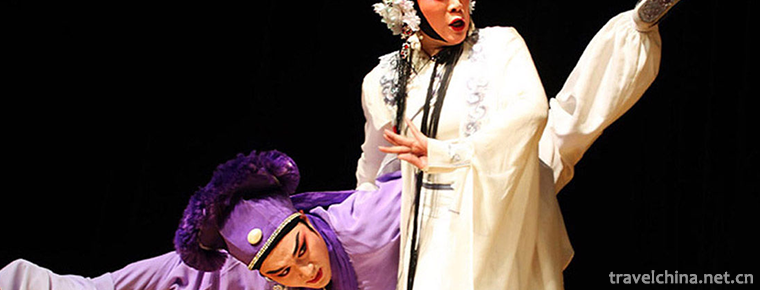
Wenzhou opera
-
Kunming World Horticultural Expo Garden
Kunming World Horticulture Expo Garden (hereinafter referred to as the World Horticulture Expo Garden) is the site of the 1999 Kunming World Horticulture Expo.
Views: 267 Time 2018-12-12 -
The Huaming Tower Scenic Area
Huaming Tower Tourist Area: National AAAAA Tourist Area, National Key Cultural Relics Protection Unit, National Patriotic Education Base.
Views: 203 Time 2018-12-12 -
Mount Tai Fonters Happy World
Tai'an Fangte Happy World is located in the eastern New Area of Taishan District, Tai'an City, Shandong Province. Font's Happy World is characterized by science fiction and animation
Views: 397 Time 2019-02-13 -
Xijiashan Folk House
Xijiashan Residence, a national key cultural relic protection unit and national AAAA-level tourist attraction, is located in Xijiashan Town, Jiang'an County, Yibin City, Sichuan Province
Views: 506 Time 2019-02-25 -
Zizhuyuan Park
Zizhuyuan Park is located in the West Third Ring of Beijing, near Baishiqiao in Haidian District, west of Beijing Capital Stadium. Zizhuyuan Park was built in 1953. It was named for the Ming and Qing
Views: 281 Time 2019-03-22 -
Tone tune
Colour tune, commonly known as tune, colour tune, colour lantern, Na Hao Hey and so on, is one of the local operas in Guangxi. It belongs to the system of Lantern opera
Views: 413 Time 2019-04-04 -
Shanghai Opera
Shanghai Opera, a local traditional drama in Shanghai, is one of the national intangible cultural heritage.
Views: 187 Time 2019-05-03 -
Qinghai Pingxian
Qinghai Pingxian, also known as Xining Fu Zi, is one of the new local folk songs in Qinghai Province. It is popular in Xining, Huangzhong, Datong and Mutual Aid Agricultural Areas. Qupai is known
Views: 224 Time 2019-06-10 -
Yang Liu Qingmu New Year Print
Yangliuqing Wood Printing New Year Picture, Tianjin folk traditional art, one of the national intangible cultural heritage.
Views: 236 Time 2019-07-11 -
Bo Er Hu boroqul
Bolhoff also worked for polo, Boruun, Boluo, rohun, and so on. Mongolia state Senior general. Mongolia famous generals, Genghis Khan One of the four founding fathers. Picked up by the battlefield, by
Views: 305 Time 2019-09-14 -
Leshan Sports
In 2018, Leshan City organized a team to participate in the 13th Sichuan Provincial Games and won 19 gold medals, 25 silver medals and 47 bronze medals. 63 provincial-level sports fitness projects were established, and 279 municipal level national fitness
Views: 320 Time 2020-12-17 -
Guangan hydrology
There are two main streams of Jialing River and Qujiang River in Guang'an City. There are more than 700 large and small rivers and streams. There are 35 primary and secondary tributaries with a drainage area of more than 50 square kilometers. Among the
Views: 343 Time 2020-12-19
